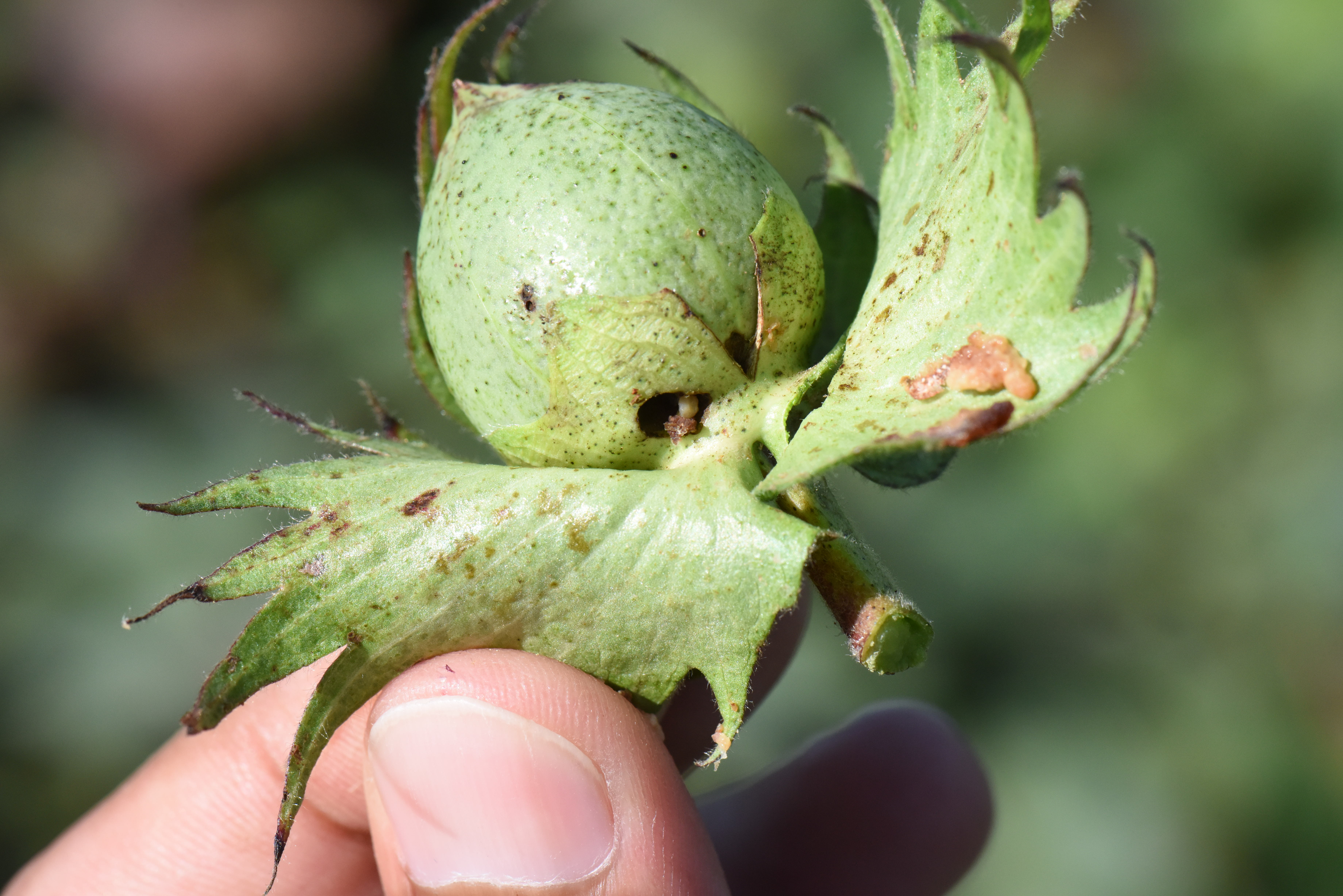Farm & Ranch
[AgriLife Today] West Texas cotton producers should be on the lookout for bollworms

By: Steve Byrns
Writer: Steve Byrns, 325-653-4576, [email protected]
Contact: Dr. Suhas Vyavhare, 806-746-6101, [email protected]
LUBBOCK – A Texas A&M AgriLife Extension Service entomologist is advising West Texas cotton farmers to remain vigilant in their hunt for bollworms.
“I haven’t come across any significant bollworm activity in the region yet,” said Dr. Suhas Vyavhare of Lubbock. “But blooming cotton coupled with new growth following recent rains in our area makes for an especially enticing combination for bollworm moths seeking egg-laying sites. So it’s important for growers not to let their guard down.”
Vyavhare’s warning was prompted by reports from South Texas of the pest breaking Bt shields there and in other parts of the country. He said treatable levels of bollworms, also called headworms when they affect sorghum, have been spotted in some South Plains sorghum fields.
That’s not to say growers should become lax in scouting for cotton pests, but boll damage and the presence of live bollworms should be taken into account before making decisions on whether to apply insecticide, he said. “I wouldn’t rush insecticide applications on Bt cotton just because bollworm eggs are present or worms less than a quarter inch are found, because they have to feed on the plant for the genetic technology to work,” he said. “Similarly, I wouldn’t pull the trigger and spray non-Bt cotton based on egg lay, as natural controls often help keep bollworm numbers in check. It’s always best to give the Bt trait technology and the beneficial insect predators a chance to work their magic first.”
“The threshold to apply insecticide is when 6 percent of the bolls, post bloom, are damaged with live worms present,” he said. “Some of the old data indicates pyrethroid insecticides may still work against cotton bollworms, though we have no recent susceptibility data available from the High Plains region.
“The diamides, trade names Prevathon and Besiege, are the most effective. Besiege contains both a diamide and a pyrethroid, so it would be the better choice if stink bugs are present too. If stink bugs aren’t an issue, Prevathon is a better option, as it’s always good to avoid unnecessary pyrethroid applications, because they also kill beneficial insects that otherwise could keep secondary pests such as aphids and spider mites at bay.”
Overall though, Vyavhare said the cotton crop looks good, though there is a wide range of cotton in different growth stages out in the fields.
“Early planted cotton fields are in bloom while some of the late or replanted cotton is a little behind,” he said. “Overall though, insect pest pressure remains light across our region.”
For more information, contact Vyavhare at 806-746-6101, [email protected].
-30-
Find more stories, photos, videos and audio at http://today.agrilife.org
Farm & Ranch
Acorn Toxicity

By Barry Whitworth, DVM, MPH
With the prolonged drought, most pastures in Oklahoma end up in poor condition. With the lack of available forage, animals may go in search of alternative foods.
If oak trees are in the pastures, acorns may be a favorite meal for some livestock in the fall. This may result in oak poisoning.
Oak leaves, twigs, buds, and acorns may be toxic to some animals when consumed.
To read more, pick up a copy of the November edition of North Texas Farm & Ranch magazine, available digitally and in print. To subscribe by mail, call 940-872-5922.

Farm & Ranch
Silver Bluestems

By: Tony Dean
There are a handful of grasses on North Texas grazing lands ranchers need to know, not because they are highly desirable, but rather because they are not of much value. I call them “decom” plants, which is am acronym for “Don’t Ever Count On Me.” Silver bluestem is a “decom” grass.
Silver bluestem is a perennial which grows in all areas of Texas. It can survive in almost all soil types, and in full sun conditions or in semi shade. It grows up to three feet tall and is easily recognized with the presence of the white fuzzy seed head. Also, one of the identifying characteristics of Silver bluestem is a bend in the stems at each node, causing the plants to take on a rounded shape as they mature.
To read more, pick up a copy of the November edition of North Texas Farm & Ranch magazine, available digitally and in print. To subscribe by mail, call 940-872-5922.

Farm & Ranch
Meanwhile Back At The Ranch

By: Rayford Pullen
Fall is here which means winter is closing in on us and before we officially get into winter, we need to make sure our factories are either producing or will be producing in a few months.
We have been pregnancy testing our cows this fall and if they are not bred or nursing a calf, we are bidding them adios. With annual costs somewhere between $900.00 and $1,000.00 per cow, those cows not producing a live weaned calf are costing us quite a bit.
To read more, pick up a copy of the November edition of North Texas Farm & Ranch magazine, available digitally and in print. To subscribe by mail, call 940-872-5922.
-

 Country Lifestyles2 years ago
Country Lifestyles2 years agoScott & Stacey Schumacher: A Growth Mindset
-

 Country Lifestyles8 years ago
Country Lifestyles8 years agoStyle Your Profile – What your style cowboy hat says about you and new trends in 2017
-

 HOME8 years ago
HOME8 years agoGrazing North Texas – Wilman Lovegrass
-

 Equine1 year ago
Equine1 year agoThe Will to Win
-

 Country Lifestyles5 years ago
Country Lifestyles5 years agoAmber Crawford, Breakaway Roper
-

 Outdoor9 years ago
Outdoor9 years agoButtercup or Primrose?
-

 Country Lifestyles8 years ago
Country Lifestyles8 years agoJune 2016 Profile – The man behind the mic: Bob Tallman
-

 Country Lifestyles8 years ago
Country Lifestyles8 years agoDecember 2016 Profile, Rusty Riddle – The Riddle Way




